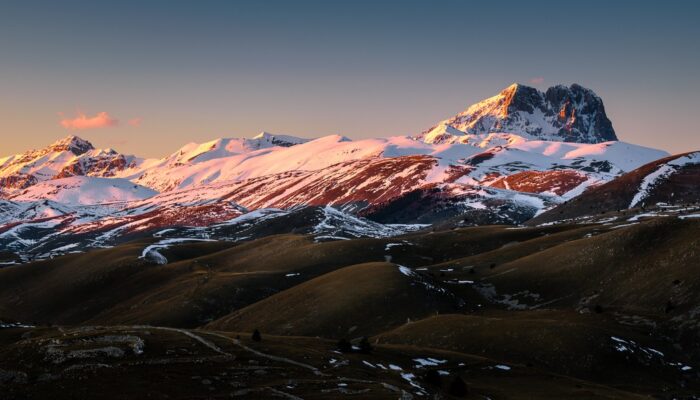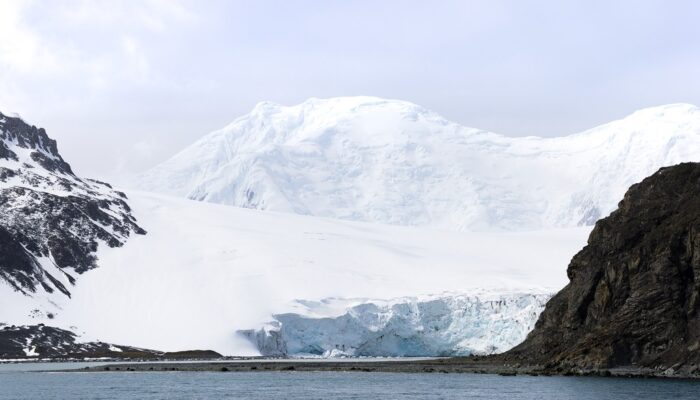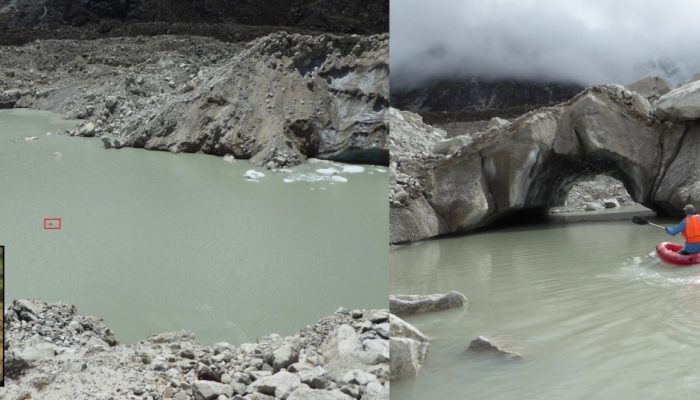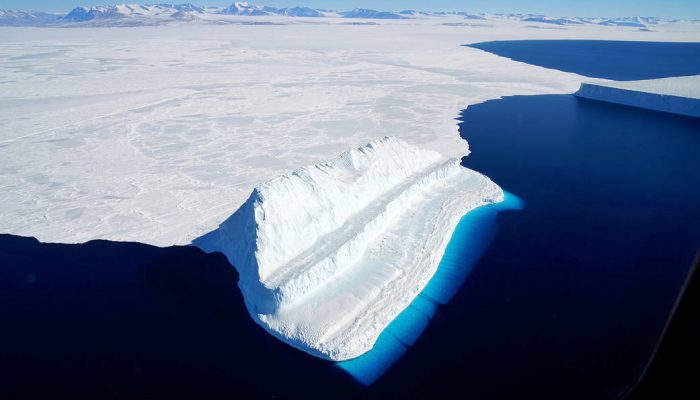In the middle of the Apennines lays the Gran Sasso d’Italia mountain chain, a picturesque collection of mountains situated in the heart of Italy. Featured here is one of the chain’s peaks, called the Corno Grande, meaning ‘Big Horn,’ coloured with a faint reddish light of a late-winter sunset. Sitting at 2,912 metres, this summit is easily the highest mountain in the Apennines. The areas sur ...[Read More]
GeoLog
Geosciences Column: The best spots to hunt for ancient ice cores
Where in the world can you find some of Earth’s oldest ice? That is the question a team of French and US scientists aimed to answer. They recently identified spots in East Antarctica that likely have the right conditions to harbor ice that formed 1.5 million years ago. Scientists hope that obtaining and analysing an undisturbed sample of ice this old will give them clues about Earth’s ancient clim ...[Read More]
Cryospheric Sciences
Image of the Week – Making waves: assessing supraglacial water storage for debris-covered glaciers
A creeping flux of ice descends Everest, creating the dynamic environment of Khumbu Glacier. Ice and snow tumble, debris slumps, ice cliffs melt, englacial cavities collapse, ponds form and drain, all responding to a variable energy balance. Indeed, Khumbu Glacier is a debris-covered glacier, meaning it features a layer of sediment, rocks and house-sized boulders that covers the ice beneath. Recen ...[Read More]
Geology for Global Development
Event Report: UN Science, Technology and Innovation Forum 2018
Last month GfGD Director, Dr Joel Gill, attended the UN Annual Forum on Science, Technology and Innovation for the Sustainable Development Goals (SDGs). With few other, if any, geoscience organisations in attendance we believed it to be important for Geology for Global Development to engage and ensure a voice for geoscience at this significant event. **Event Overview** UN General Assembly resolut ...[Read More]
Tectonics and Structural Geology
Mind your head #3: A healthy relationship with your advisor
Mind Your Head is a blog series dedicated towards addressing mental health in the academic environment and highlighting solutions relieving stress in daily academic life. Besides the professional environment in general, the relationship between early career researchers and their advisors also plays an important role in the degree of stress researchers might experience. This relationship does not o ...[Read More]
Geodynamics
50 years of plate tectonics: then, now, and beyond
Even if we cannot attend all conferences ourselves, your EGU GD Blog Team has reporters that make sure all significant geodynamics events are covered. Today, Marie Bocher, postdoc at the Seismology and Wave Physics group of ETH Zürich, touches upon a recent symposium in Paris that covered one of the most important milestones of geodynamics. On the 25th and 26th of June, the Parisian Collège de Fra ...[Read More]
GeoLog
Imaggeo on Mondays: Namibia’s mysterious fairy circles
The grassy Namibian desert is pock-marked with millions of circular patches of bare earth just like these shown in the picture between linear dunes. Viewed from a balloon, they make the ground look like a moonscape. Commonly known as fairy circles, the patches range from two to 12 metres across and appear in a 2000 kilometre strip that stretches from Angola to South Africa. For many decades, the f ...[Read More]
Cryospheric Sciences
Image of the Week – Climate feedbacks demystified in polar regions
Over the recent decades, the Arctic has warmed twice as fast as the whole globe. This stronger warming, called “Arctic Amplification“, especially occurs in the Arctic because ice, ocean and atmosphere interact strongly, sometimes amplifying the warming, sometimes reducing it. These interactions are called “feedbacks” and are illustrated in our Image of the Week. Let’s ...[Read More]
GeoLog
Shape the EGU 2019 scientific programme: The call for sessions is open!
Do you enjoy the EGU’s annual General Assembly but wish you could play a more active role in shaping the scientific programme? Now is your chance! From today, until 6 Sep 2018, you can suggest: Sessions (with conveners and description), Short Courses, or; Modifications to the existing skeleton programme sessions Plus from now until 18 January 2019, you can propose townhall meetings. It’s imp ...[Read More]
GeoLog
June GeoRoundUp: the best of the Earth sciences from around the web
Drawing inspiration from popular stories on our social media channels, as well as unique and quirky research news, this monthly column aims to bring you the best of the Earth and planetary sciences from around the web. Major story While May’s headlines may have been dominated by the Kilauea Volcano’s recent eruption in Hawaii, the science news world directed its attention to another volcanic ev ...[Read More]










